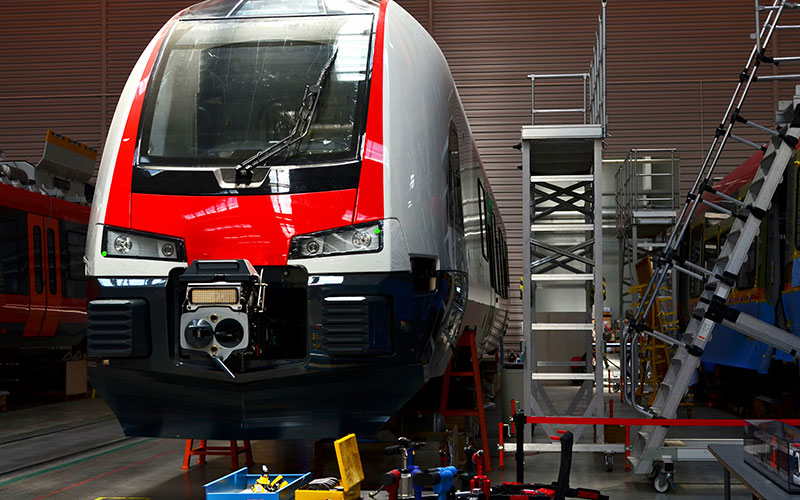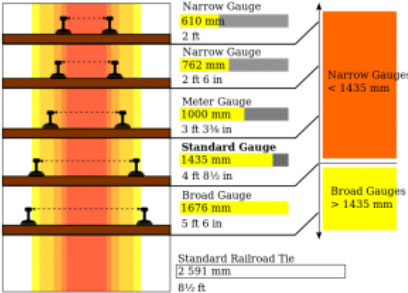
The company Dynte has wide varieties and possibilities of supplying the passenger coaches. We can also supply on lease as well as on sale the steel coaches which will cater to the platform heights of 550 mm and 760 mm. The passenger coaches shall be certified to the high speed TSI and meet all the requirements in accordance with EN 15227. The train can run at the speed of 250km/hour. It can maintain the speed with 11 cars.
The company can arrange supply of Aluminum Passenger coaches for broad gauge with the following configuration: -
| Maximum speed | 100 to 250 km/h |
|---|---|
| Operating speed | 100 to 230 km/h |
| Capacity | Up to 54 passengers per car |
| Configuration | Minimum 2 end and 1 intermediate car |
| Traction & control | Locomotives, cab-cars available |
|---|---|
| Track gauge (mm) | 1435, 1520,1668 and 1676 680-760 mm from rail Other heights are possible depending on the project |
| Length (m) | Minimum trainset length 40m |
| Bodyshell width (mm) | 2942-3200 |
| Unladen weight (tonnes) | 13-19 tonnes |
| Number of axles | Minimum 4 axles per trainset / 3 coaches composition |
| Power | Multi-system |
| Brakes | Electric regenerative brakes / compressed air |
The passenger coaches body will be of extruded aluminium. The coaches are 30% lighter than the steel passenger coaches. The passenger coaches are extremely safest with offer absolutely minimum resistance even offer greater speed at the range of 100 to 250Km/hour.
By using an extruded aluminium structure for its trains, Talgo is able to manufacture the lightest passenger rolling stock in the world. The trains are typically 30% lighter than conventional vehicles, while these materials also ensure maximum safety and minimal resistance even when operating at 180-250 km/h.
Many countries have experimented with aluminium passenger cars that are combined with the tilting system. This system used a large A-frame connected to the centre of the bogie that was as high as the cars. At the top of the A was a bearing system that the cars attached to, and a spring and damping system to smooth its motion. Because the cars were connected at this high point, they could swing to either side around the bearing axis, and this caused them to naturally pendulum outward on curves.
The term "cant deficiency" is defined in the context of travel of a rail vehicle at constant speed on a constant radius curve. Cant itself is a British synonym for the superelevation of the curve, that is, the elevation of the outside rail minus the elevation of the inside rail. Cant deficiency is present when a vehicle's speed on a curve is greater than the speed at which the components of wheel to rail force are normal to the plane of the track. In that case, the resultant force (aggregated force of gravitational force and centrifugal force) exerts the outside rail more than the inside rails, in which it creates lateral acceleration toward outside of the curve. In order to reduce cant deficiency, the speed can be reduced or the superelevation can be increased. The amount of cant deficiency is expressed in terms of required superelevation to be added in order to bring the resultant force into balance between the two rails. In the contrary, it is said to be "cant excess" if the resultant force exerts more against the inside rail than the outside rail, for instance, a high superelevation curve with a train traveling at a low speed
 In fact, conventional train coaches were equipped with 2 rolling systems called bogies. Each bogie has 2 sets of wheels connected with an axle. Each bogie can rotate independently
to adapt to curves. The aluminium coaches suggested by Dynte are a bit shorter and lean on a single rolling system composed of 2 independent wheels.
In fact, conventional train coaches were equipped with 2 rolling systems called bogies. Each bogie has 2 sets of wheels connected with an axle. Each bogie can rotate independently
to adapt to curves. The aluminium coaches suggested by Dynte are a bit shorter and lean on a single rolling system composed of 2 independent wheels.
These wheels are adjacent to the coach compared to traditional trains that are set on top of bogies, reducing the height of the coach and then moving down the centre of gravity. You, as a passenger, can easily feel this when you get on a Coaches of Aluminium with rolling systems and you are at the same height of the platform and steps are not required.